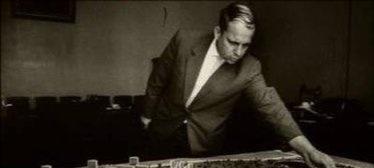The Second World War was a catastrophe for humanity, a 2,194-day catastrophe that not only affected 61 countries and territories around the world, but also caused the death of some 70 million people and the injury of 130 million people to varying degrees. Especially in the Soviet-German battlefield, the confrontation between Germany and the Soviet Union was very fierce, and while the Germans were gradually defeated, they also turned everywhere they went into scorched earth, which directly led to the almost loss of the Soviet Union's infrastructure after the war.

The most serious of these was the housing problem, which was burned down by the war and left Soviet civilians with nowhere to live. During the Stalin period, the conditions for soviet state cadres to live were as poor as slums, let alone ordinary civilians, and if they were lucky, they could have a small room for the family to squeeze in, while the unlucky ones could only survive in basements, sheds, dangerous houses and other places. For this reason, the Soviet people often quarreled over the common kitchen and bathroom, and fought because of the small sounds of the night. Over time, the Soviets, who could not bear such poor living conditions, almost rioted. Therefore, how to solve the housing contradiction in the post-war Soviet Union is urgent.
In 1953, Stalin died. As soon as Khrushchev came to power, he immediately embarked on a drastic reform of the housing problem. Because of the many problems left over from the Stalin period, Khrushchev listed "how to improve the housing environment of the Soviet people" as the top priority in the next five-year plan.
Khrushchev stole a clever trick from the French, proposing the policy of building a large number of "minimalist buildings" throughout the Soviet Union. That is, the French design of the "cheap social housing" model building into a simple house. The characteristics of this kind of building are: more, faster, better and more provincial. He asked Soviet experts to design a simple building that could contain simplicity (saving space by omitting elevators and garbage aisles), rapid manufacturing and reproduction, relatively good housing conditions, and the use of few building materials. Because it was Khrushchev's proposal, the Soviet people also affectionately called this kind of building "Khrushchev" building.
To this end, the buildings built in the Soviet Union were like assembly lines, all buildings were in a uniform container style, removing all room decorations and unnecessary functions, and only retaining separate bathrooms and kitchens. However, although the sparrow is small, it is complete. Objectively speaking, under limited conditions, the "Khrushchev Building" has successfully improved the housing conditions of residents throughout the country in a relatively short period of time. In order to achieve the goal of "building socialism within twenty years", the Soviet government allowed such buildings to rise everywhere for a period of time.
Under Khrushchev's policy, the housing problem in the USSR was solved, and the Soviet people were well resettled, so there were no more troublemakers over the housing problem. This is probably also the best achievement of Khrushchev's administration.